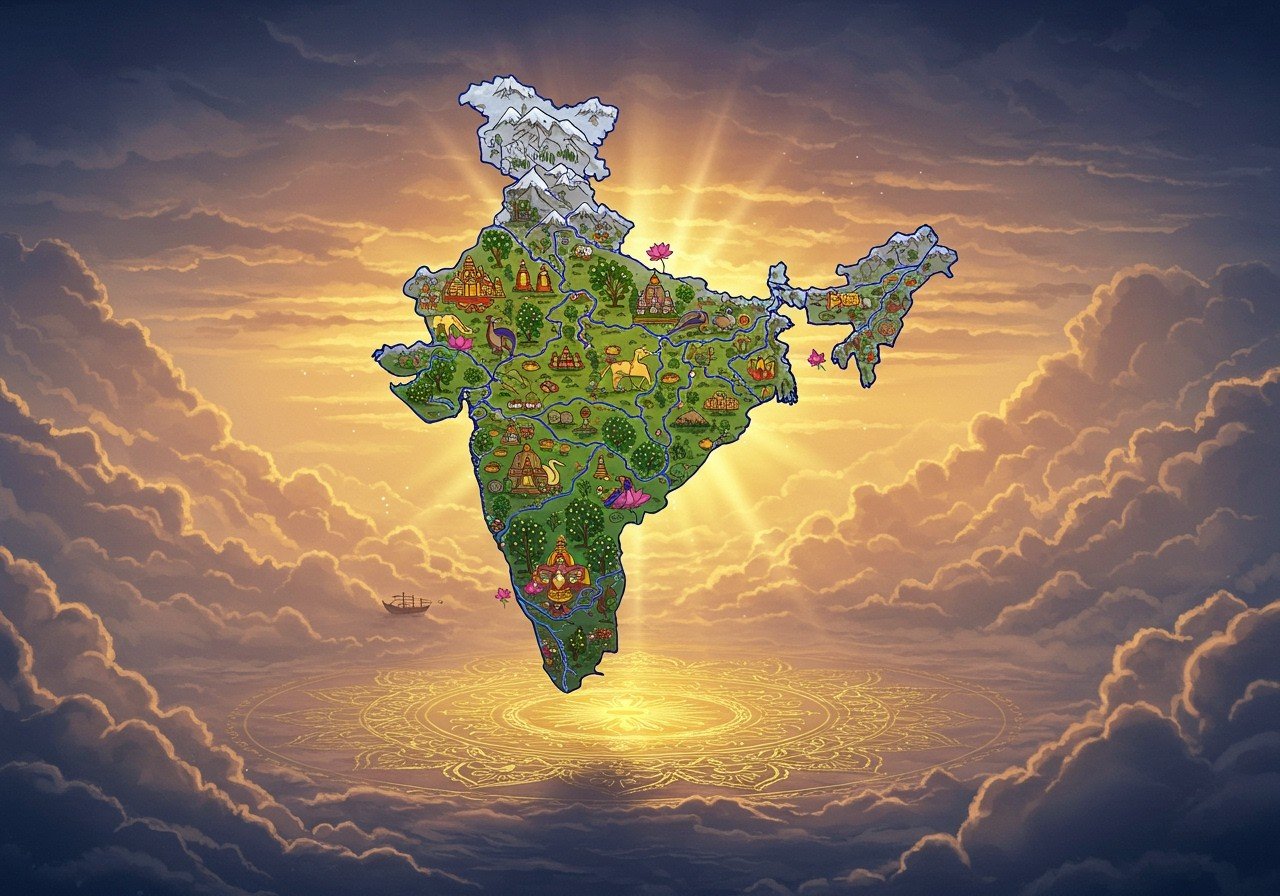
India, renowned for its rich cultural heritage and diverse traditions, holds a significant global position due to its unique geographic location. This blog post delves into India’s geographic placement, its significance in Asia, iconic landmarks like India Gate, and how geography influences culture and lifestyle. Understanding India’s geography enhances our appreciation for its natural beauty and strategic importance.
Where is India Located?
India, the seventh-largest country globally, occupies a significant portion of South Asia. It’s a land of diverse geographical features, including towering mountains, extensive rivers, vast oceans, and various bordering nations. It comprises 28 states and eight union territories, with New Delhi serving as its national capital.
India is bordered by:
- Pakistan to the northwest
- China and Nepal to the north
- Bhutan to the northeast
- Bangladesh and Myanmar to the east
The Indian Ocean lies to the south. India’s location on the Indian Plate, which collided with the Asian Plate to form the Himalayas, has significantly influenced its geological structure. The country’s coordinates are between 8°4′ to 37°6′ north latitude and 68°7′ to 97°25′ east longitude. This diverse topography encompasses the Himalayan mountain range, the Thar desert, and the fertile plains of the Ganges. Historically, India’s location has been vital for prominent trade routes, including the Silk Road.
India’s Place in Asia
India’s strategic location in Asia is crucial for regional geopolitics and trade. Its proximity to major Asian economies like China and Japan makes it a significant player in international relations. Key maritime routes, including the Strait of Malacca and the Suez Canal, are nearby, further enhancing India’s trade and strategic significance.
India plays a significant role in the South Asian Association for Regional Cooperation (SAARC) and maintains strong economic and cultural ties with the Association of Southeast Asian Nations (ASEAN). Its geographic advantages facilitate relations with Russia, Central Asia, and the Middle East. This strategic position significantly impacts India’s defense strategy and foreign policy.
The Iconic India Gate
India Gate, a renowned monument located in New Delhi, India’s capital, stands as a symbol of national pride and unity. Designed by Sir Edwin Lutyens, it was built as a war memorial to honor the soldiers who died in World War I and bears resemblance to the Arc de Triomphe in Paris. The surrounding area, including Rajpath and Rashtrapati Bhavan, adds to its grandeur, attracting millions of visitors annually.
How Geography Influences Culture and Lifestyle
India’s diverse geography profoundly influences its culture and lifestyle:
- Cultural Practices: Vary significantly across regions due to the diverse landscapes of mountains, rivers, and plains, leading to a rich tapestry of cultural expressions.
- Climate: The varied climate significantly affects traditional clothing, food habits, and the celebration of festivals, showcasing the adaptability of Indian culture to different environments.
- Agriculture: Geographic conditions determine agricultural practices, with rice cultivation prominent in the south and wheat in the north, contributing to regional culinary distinctions.
- Religious Practices: The Ganges River, a prominent geographical feature, holds immense significance in Hinduism, shaping religious beliefs and rituals for millions.
- Maritime Traditions: The extensive coastal geography influences seafood cuisine and maritime traditions, enriching the diversity of Indian culinary heritage.
- Linguistic Diversity: Geographic diversity has fostered linguistic richness, with numerous languages and dialects spoken across the country, reflecting regional variations.
Poojn.in: Connecting You with India’s Sacred Geography
Poojn.in, India’s largest cultural goods and services store, brings the essence of India’s sacred geography to your doorstep. Our extensive delivery network covers every corner of the country, ensuring access to authentic puja items and facilitating a deeper connection with India’s holy places and traditions.
- Pan-India Delivery: We deliver authentic puja items to all 28 states and 8 union territories across India, ensuring accessibility regardless of location.
- Regional Sacred Items: Access specific items from different geographical regions of India, allowing you to connect with the unique spiritual traditions of each area.
- Authentic Products: We offer genuine ritual items sourced from various holy places across India, ensuring the authenticity and sanctity of your puja practices. Explore our collection of Sakha by Poojn.
For your geographic-specific puja needs, we offer:
- Regional Agarbattis and Dhoop: Experience the unique fragrances and spiritual significance of agarbattis and dhoop specific to different regions of India. Check out our Kushal Mangal Floral Bouquet Puja Prayer Agarbatti.
- Local Temple Prasad: Receive prasad from various temples across India, connecting you with the blessings and spiritual energy of these sacred sites. Discover Maha Tirtha Gold Sindoor.
- Sacred Items from Pilgrimage Locations: Obtain sacred items from specific pilgrimage locations, allowing you to maintain a connection with these holy sites and enhance your spiritual practices. Explore Ogour Pure Aguru by Balaji.
Download the Poojn app today to explore our complete range of authentic puja items delivered anywhere in India. Our nationwide delivery network ensures that distance is never a barrier to maintaining your spiritual practices.
Conclusion
India’s geographical location is truly remarkable, shaping its diverse landscapes, cultural richness, and strategic global importance. From the towering Himalayas to the serene coastal regions, India’s geography influences every aspect of life, creating a unique tapestry of traditions and experiences.
As we continue to explore and understand India’s geographic wonders, we can better appreciate the deep-rooted traditions and the modern advancements that coexist harmoniously in this incredible country.


